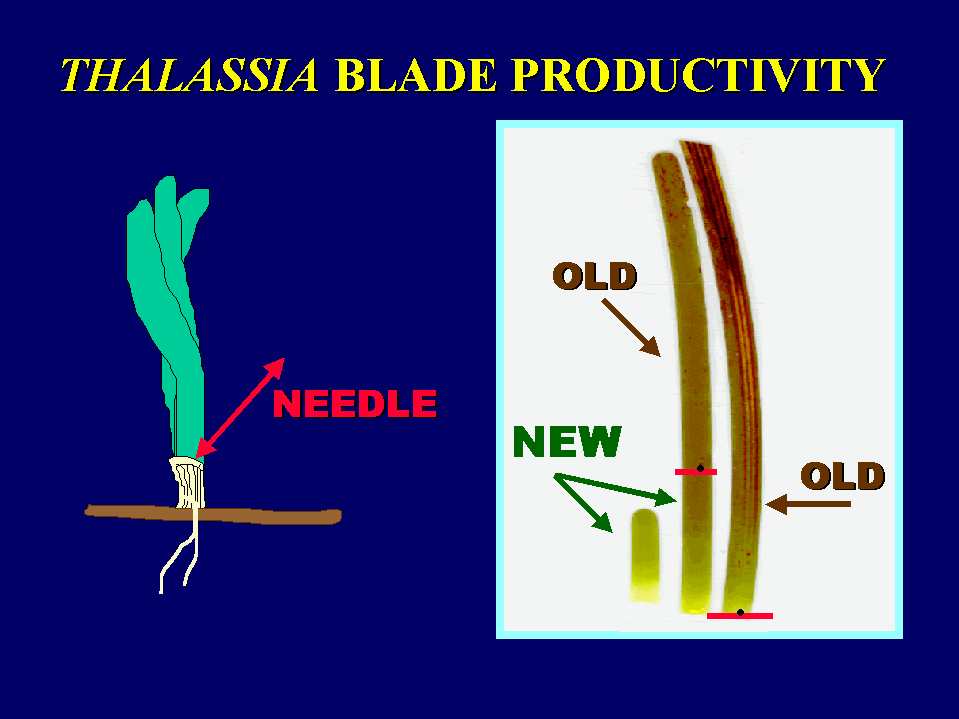Productivity Methods
Primary productivity of Thalassia testudinum was measured on a quarterly basis at each permanent site using a modified leaf marking technique (see Zieman JC (1974) Methods for the study of the growth and production of turtle grass, Thalassia testudinum König. Aquaculture 4:139-143). Six 10 cm X 20 cm quadrats were haphazardly distributed within 10 m of a permanent steel rod that marked the site. Within each quadrat, all short shoots of the seagrass T. testudinum were marked near the base of the leaves by driving an 18-gauge hypodermic needle through all of the leaves on a short shoot. Care was taken not to disturb other plant and animal taxa in the quadrats. The marked short shoots were allowed to grow for 10 - 14 days; after which all above-ground seagrass material in the quadrats was harvested. The number of short shoots of each seagrass species was counted. Plant material was separated by seagrass species; and T. testudinum leaves were separated further into leaf newly produced and older leaf material. Newly produced leaf material consisted of unmarked leaves and the portions of marked leaves below the scar left by the hypodermic needle (see figure below). All leaves of all species were counted, measured (length and width to nearest mm), cleaned of epiphytes by gentle scraping, and dried to constant mass at 70oC.
